A Nikon F in District Six, 1966
Graham Serretta , nov 20, 2005; 03:43 p.m.
These photographs were taken on a hot December day in 1966, in Cape Town's District Six. The camera was a Nikon F plain prism, fitted with a Nippon Kogaku 50mm f2.0 Nikkor-H lens with a Nikkor Y2 filter and Nikkor clip-on lens hood. The film was Agfa-Gevaert 513 (80 ASA) motion picture stock rated at (if I recall correctly) 320 ASA for development in Acufine. The scans were done on a Minolta Scan- Elite 5400 at 3500 dpi and resized down to 940 pixels wide for posting here. District Six, for those who are not familiar with South African history, was named the Sixth Municipal District of Cape Town in 1867. Located to the south-west of central Cape Town which evolved around it, the area became, by modern standards, a slum which occupied prime land. Originally established as a mixed community of freed slaves, merchants, artisans, labourers and immigrants, District Six was a vibrant centre with close links to the city and the port. By the beginning of the twentieth century, however, the history of removals and marginalisation had begun. The first to be 'resettled' were black african South Africans, forcibly displaced from the District in 1901. The remaining inhabitants were people of mixed decent, or "Cape Coloureds" as they were known, with some of Malay decent and a sprinkling of Indian families as well. As the more prosperous moved away to the suburbs, the area became the neglected ward of Cape Town. Crime was the main industry, and it was said that one could get anything in District Six. Prostitution, drugs, dealers in stolen goods, car theft syndicates, they all churned around in a melting pot of criminal culture brought on by the poverty of the people who lived there. In 1966, it was declared a "white area" under the Group Areas Act of 1950, which was the only means the government could find that would allow the demolition of the area as "slum clearance". The bulldozers moved in and the area was all but flattened by 1970, and re-named "Zonnebloem". 60 000 people were forcibly removed to barren outlying areas aptly known as the Cape Flats. The families that were moved away are now having their land restored to them, with modern housing having been built to replace the demolished homes. The thing that I remember most about District Six was the laughter of children as they played in the streets and alleys. The people were ever friendly and hospitable, and despite their poverty, they were proud. I loved to walk around indulging in my passion for street photography, and found many willing subjects. The old Methodist church which was abandoned when I took these photographs, (St Marks) is now the District Six museum and cultural centre. Harrington street was the original Jewish quarter of Cape Town, and the photograph with the Palm tree in the back-ground was taken on Vernon Terrace, where there were many palm trees planted from seeds brought back from Mecca by pilgrims. All now gone, but not forgotten. Here are some of the pics at 500 dpi for those on dial-up. (I have replaced these with 1024x683 images - click here to view them on Flikr full size - https://flic.kr/s/aHsjzH3c1H GS)
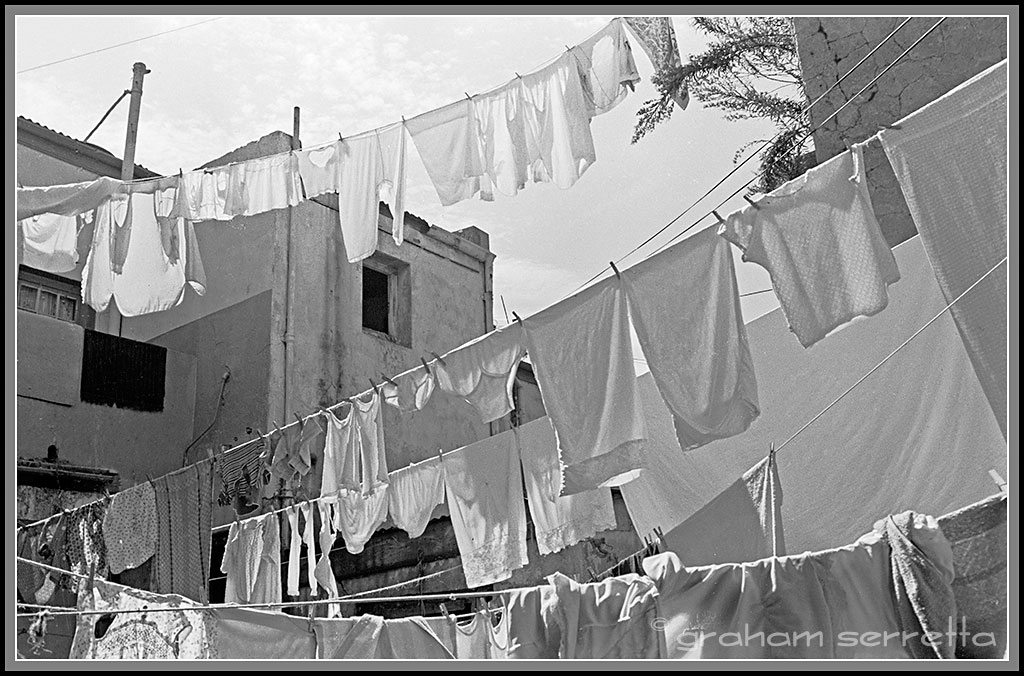
Washing hangs from makeshift lines in District 6
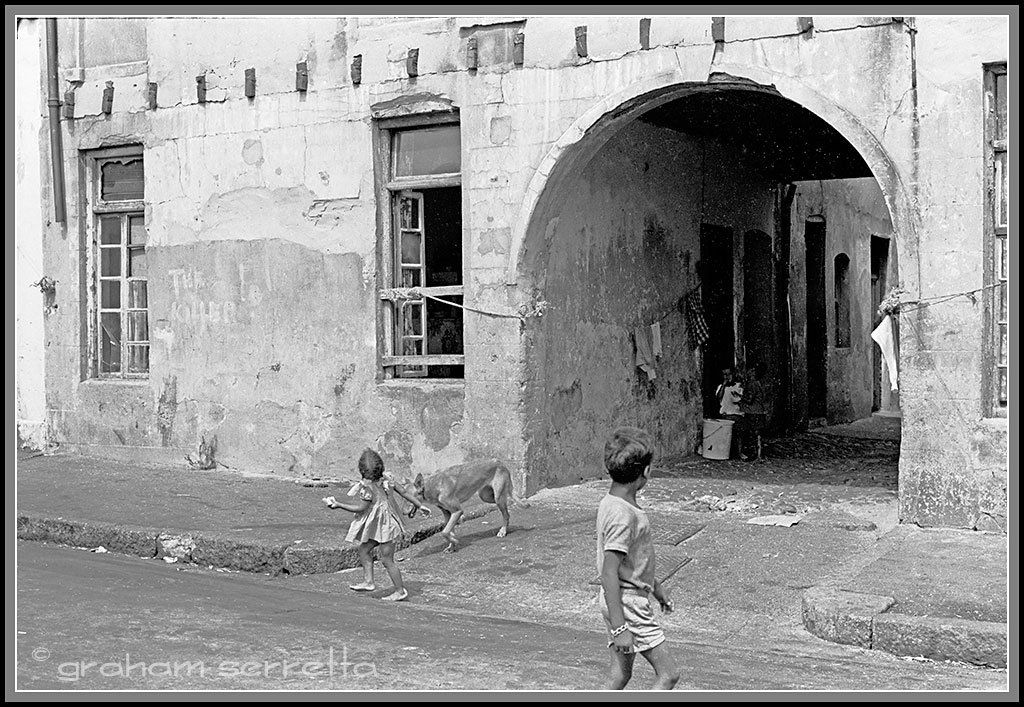
Children play in the street in District 6
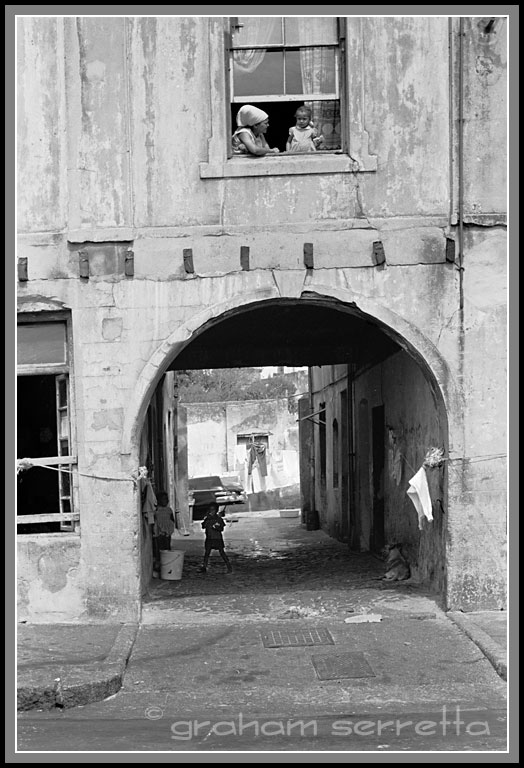
Originally a coach house, this inn is now home to a family in District 6
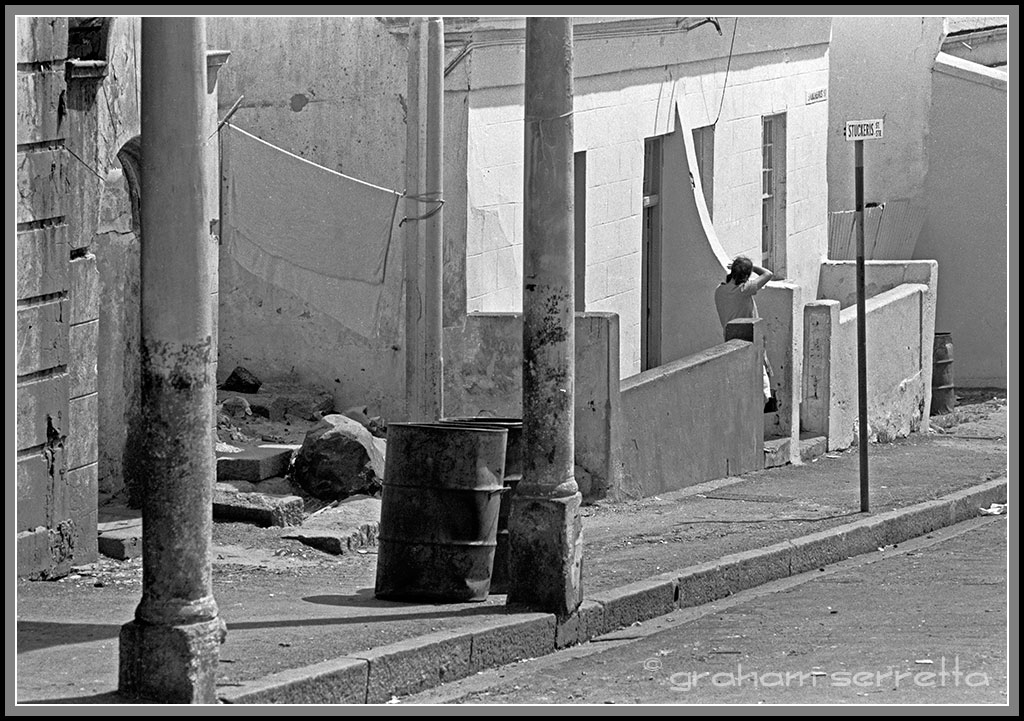
These cottages in Stukeris Street in District 6 were originally built to house servants of a wealthy merchant. They are referred to as "malay cottages."
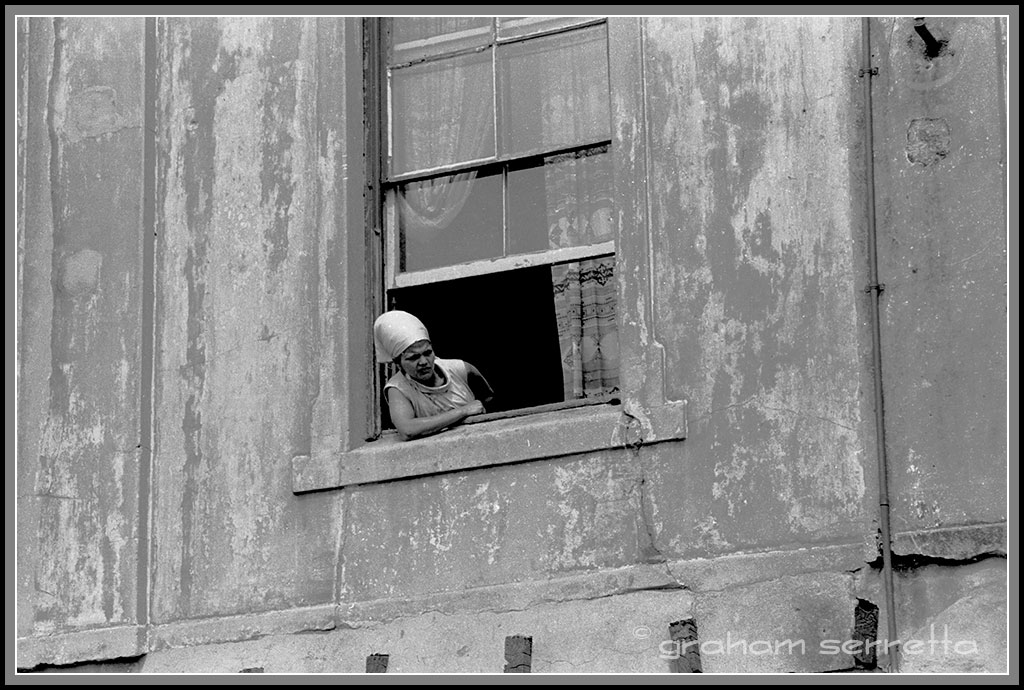
A woman with her face covered with skin lightening cream checks on her children playing in the street below, in District 6.
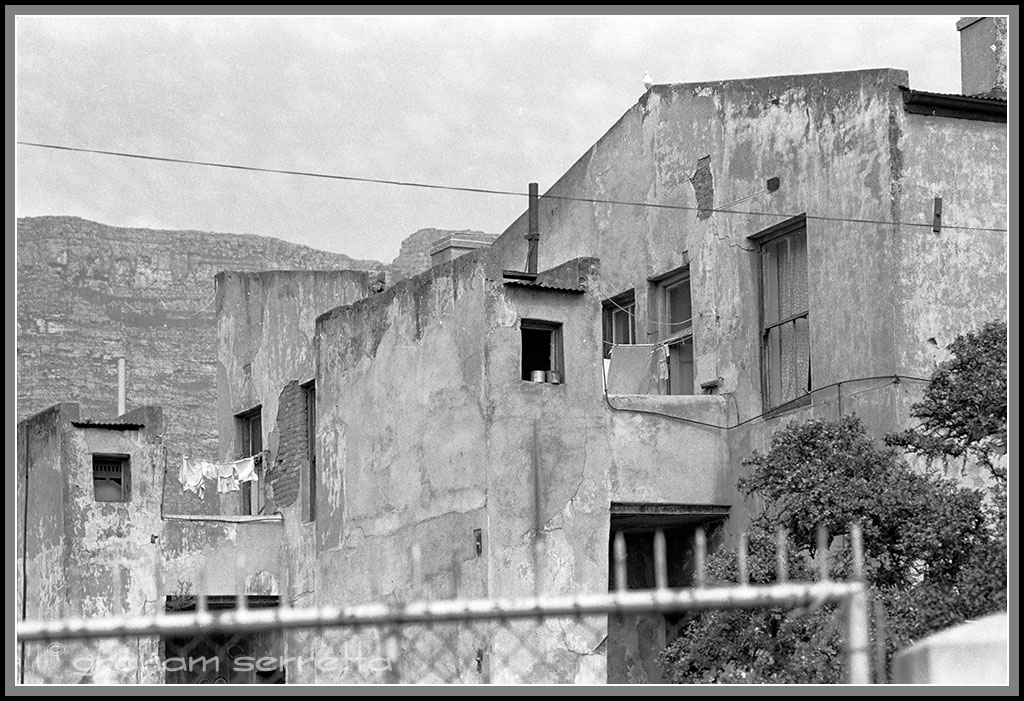
Once the home of a wealthy merchant, this house has become a tenement slum dwelling in District 6. The slopes of Table Mountain can be seen in the background.
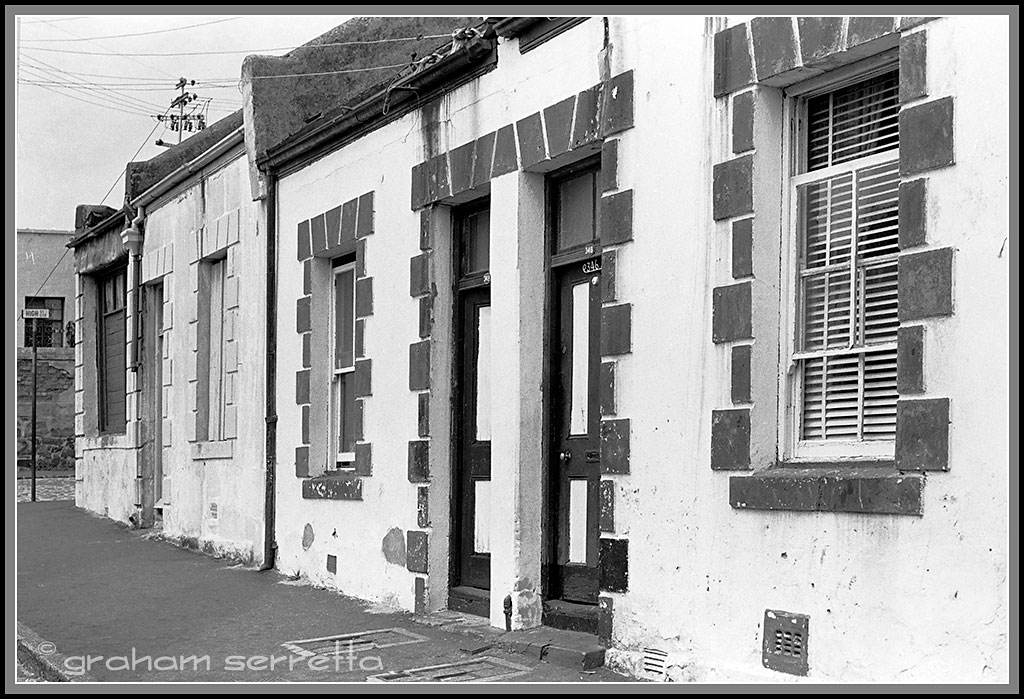
These cottages on the corner of Stuckeris and High streets were once slave quaters
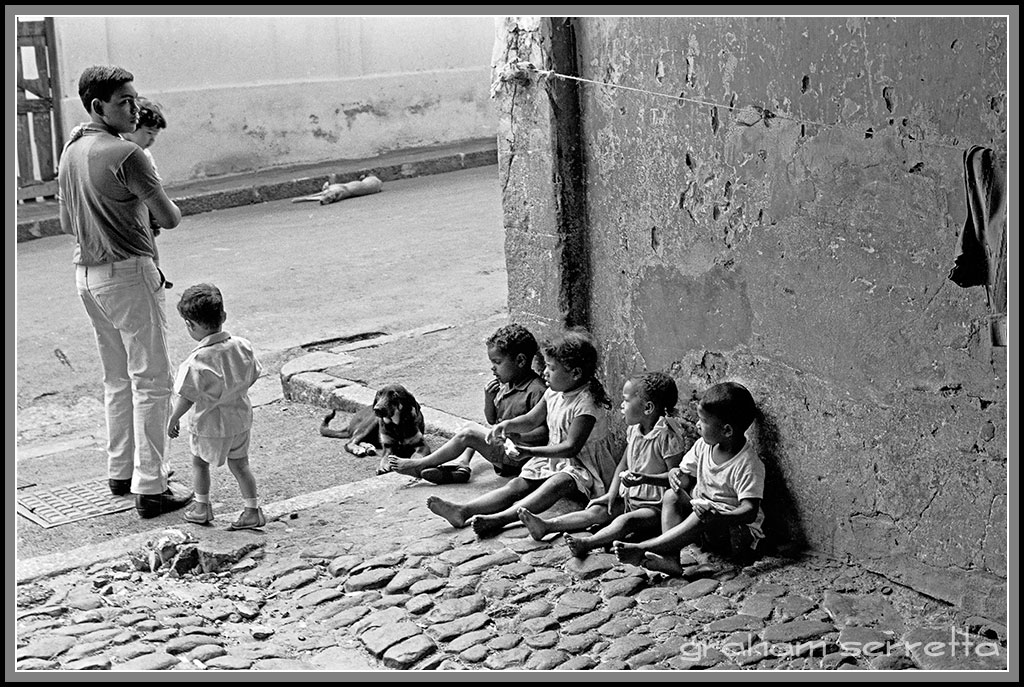
Children play in the street while a father cares for the baby in District 6
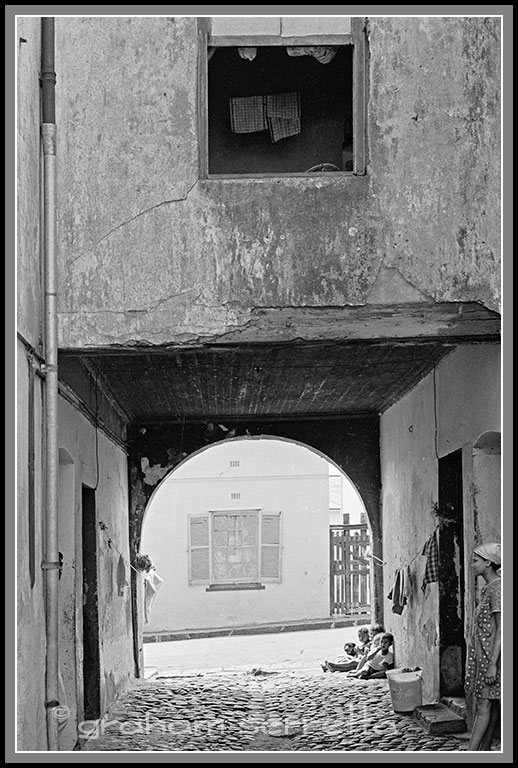
The rear of what was once a carriage house entrance in District 6. The cobbles paving the roadway were originally laid in the 1700's
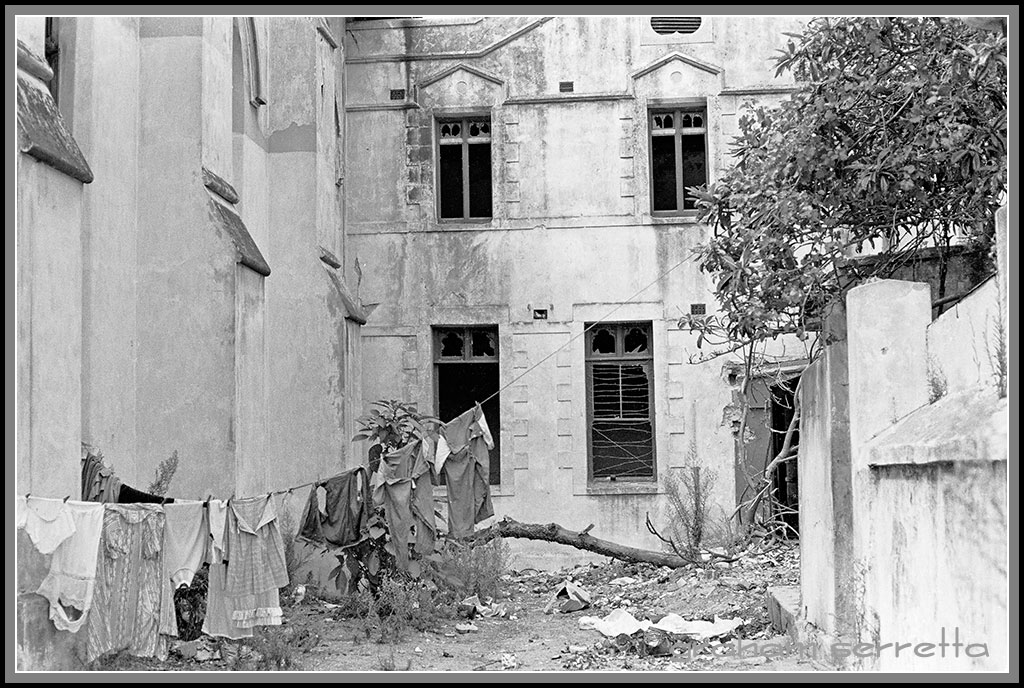
The entrance to what was originally a wealthy family's townhouse in District 6
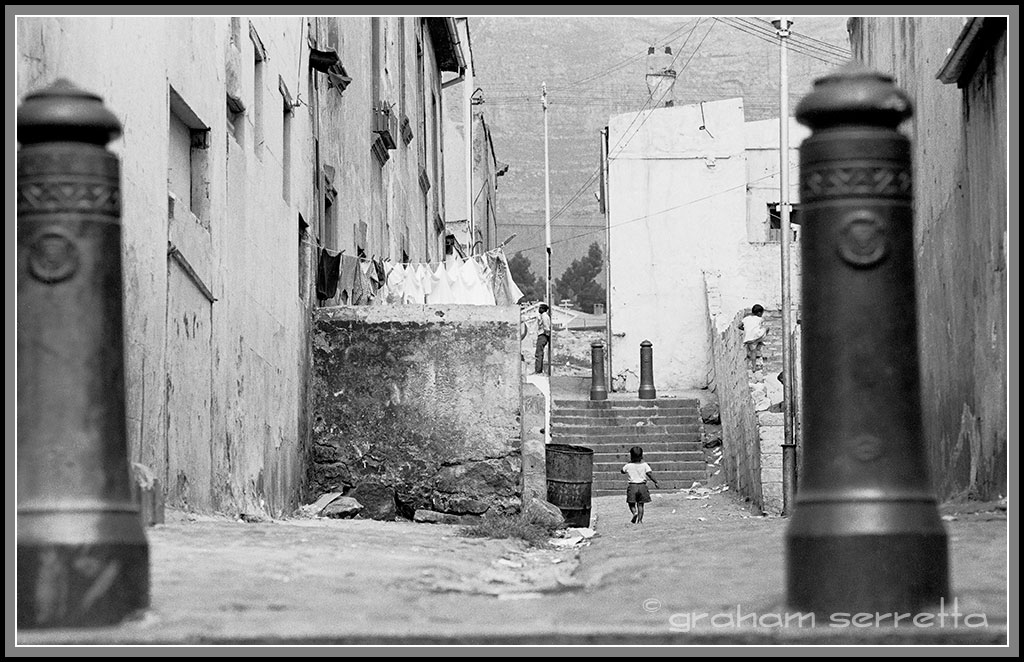
The upper reaches of Buitenkant street. The cast iron bollards bear the emblem of the V.O.C, or Dutch East India Company, and date from early in the 18th century.
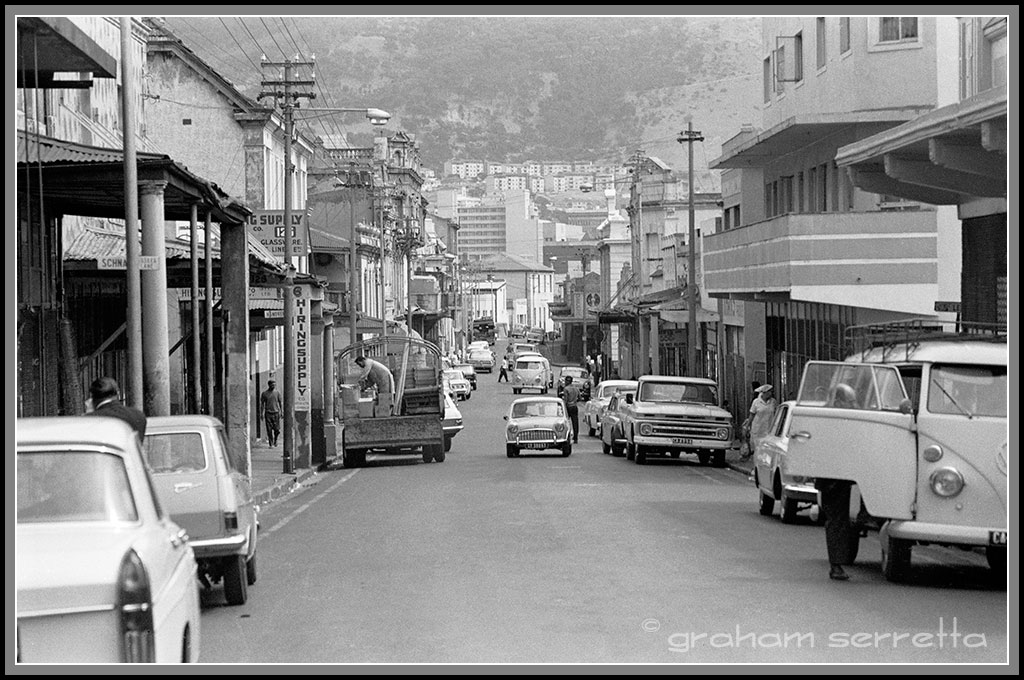
A view of Buitenkant Street looking north towards District 6, with the slopes of Table Mountain in the background.
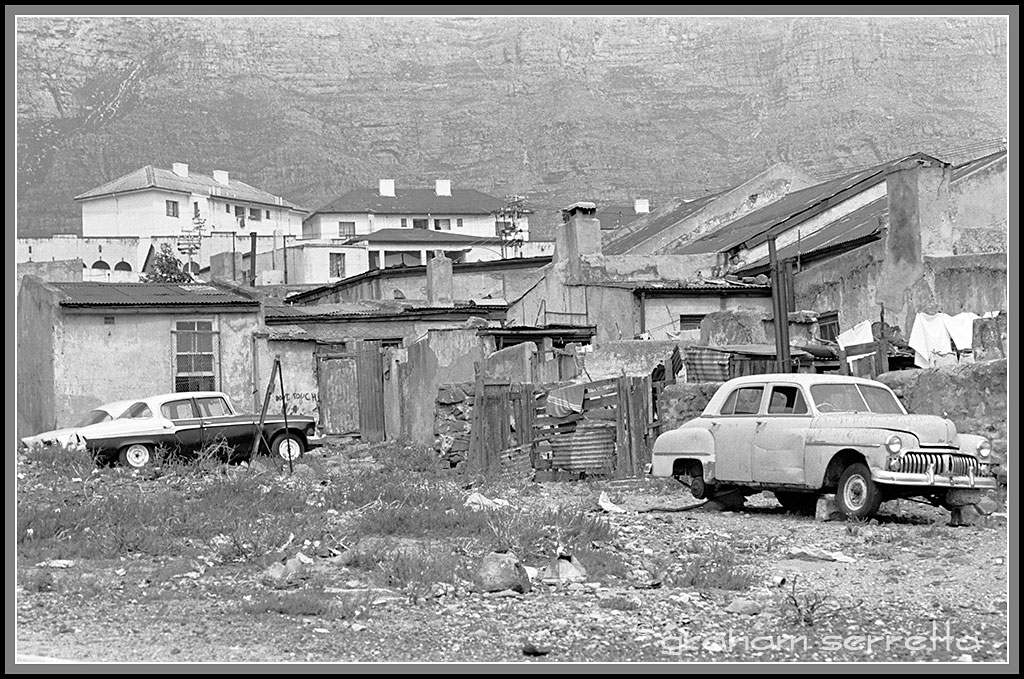
The upper side of District 6 with Table Mountain in the background. Motor cars were a luxury that few could afford in District 6, and old cars were prized for their durability. On the left, two Studebakers, and on the right, a De Soto. Perhaps the De Soto once belonged to my father, who bought an identical car new.
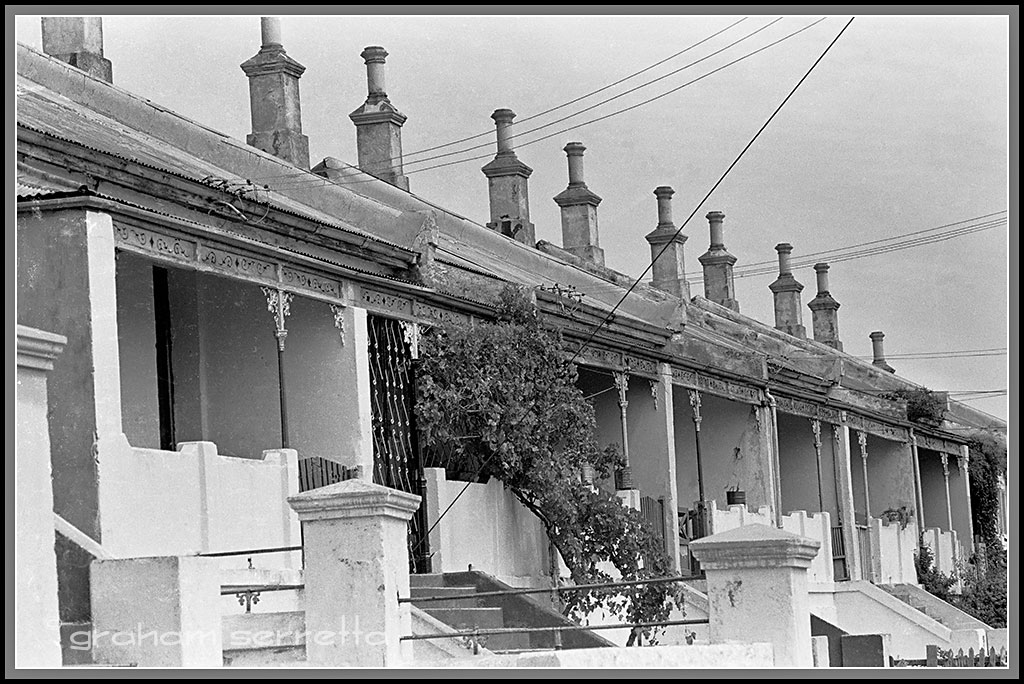
These semi-detached cottages were built during Victorian times to house white working class families.
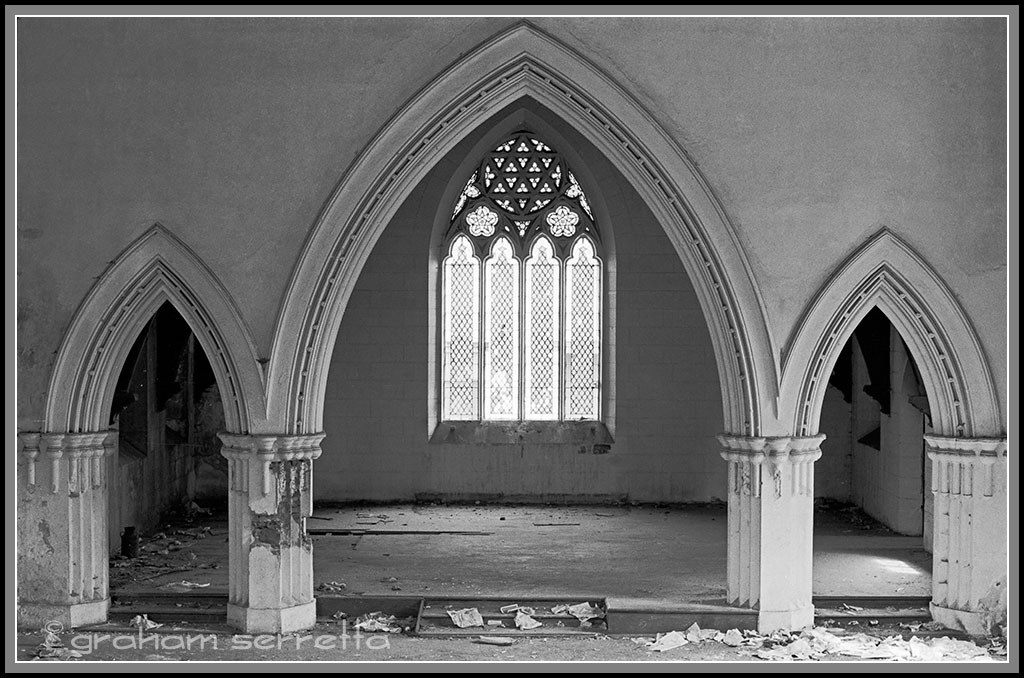
The interior of the abandoned St Marks church which is now the District Six museum and cultural centre.
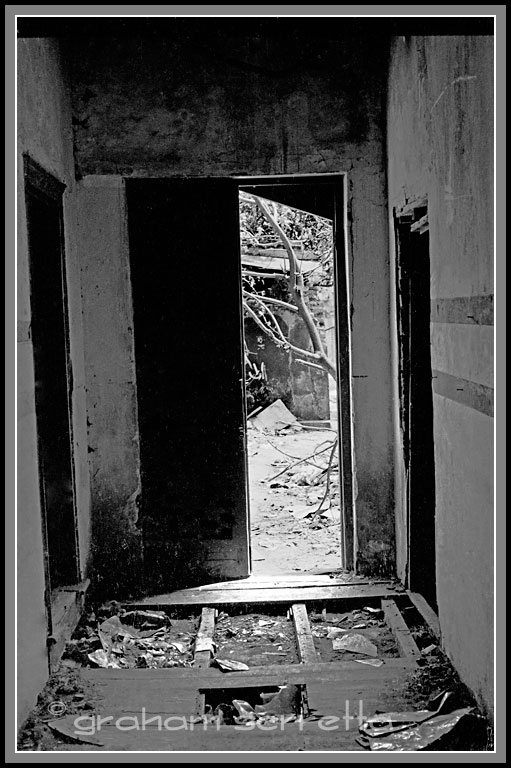
By the time that the bulldozers got there, much of the buildings had been removed to provide building materials for the evicted residents in their new "homes"
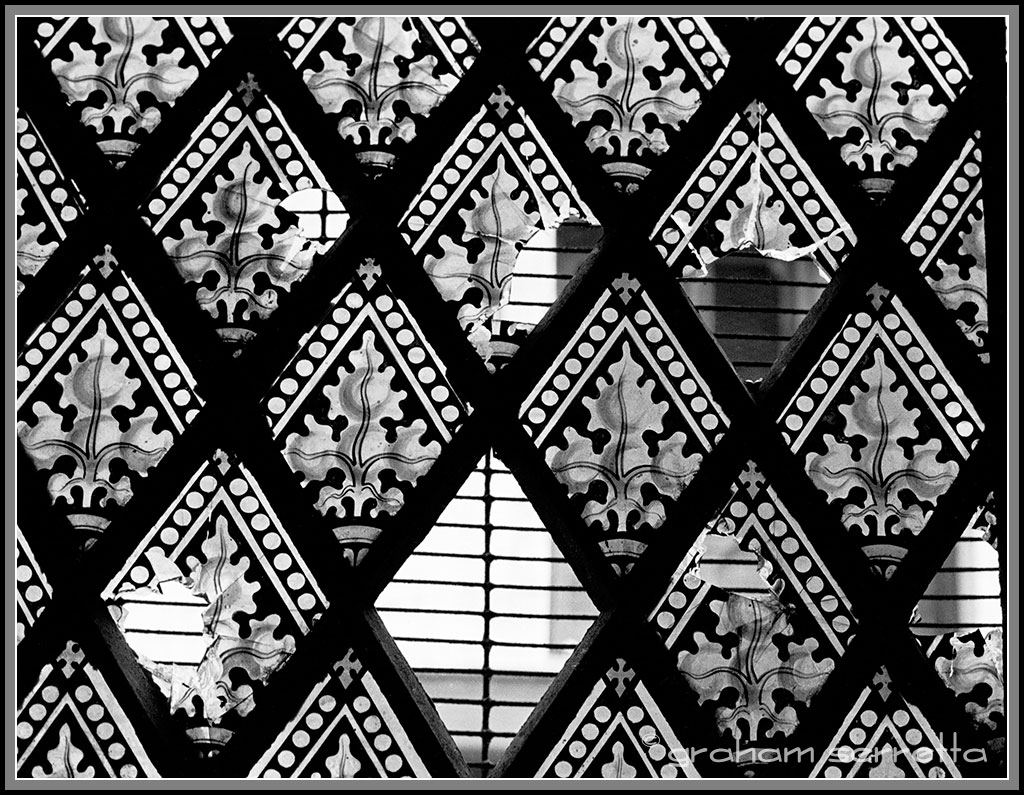
Broken stained glass window of the old church in District Six.
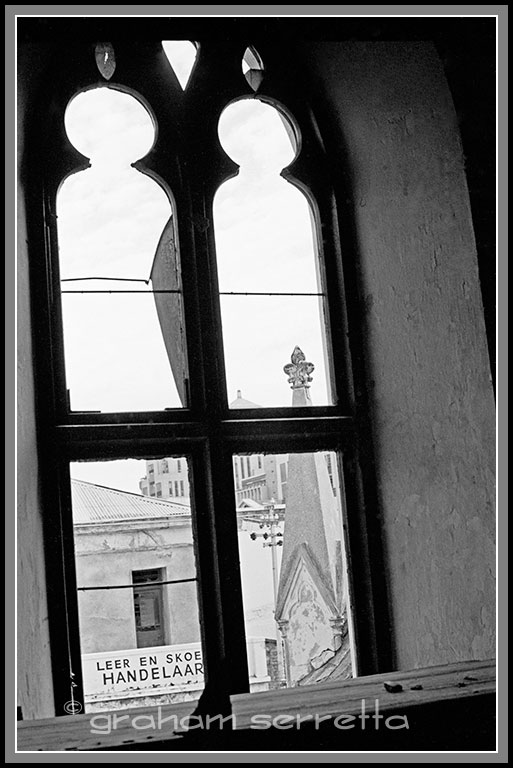
View from a window of the old church in District Six. The sign advertises "Leather and Shoe Merchant." District Six was full of craftsmen such as this and cabinet makers, potters, blacksmiths and dress makers.
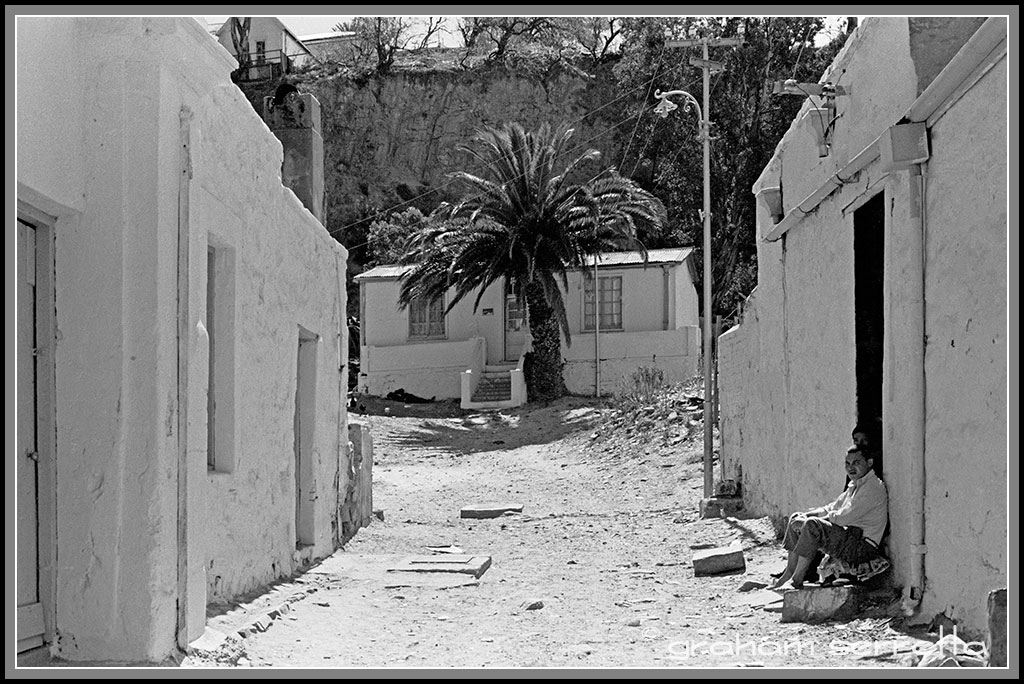
Many of the streets of District Six were cut into the side of the lower slopes of Table Mountain.This street would originally have been paved with cobble stones.
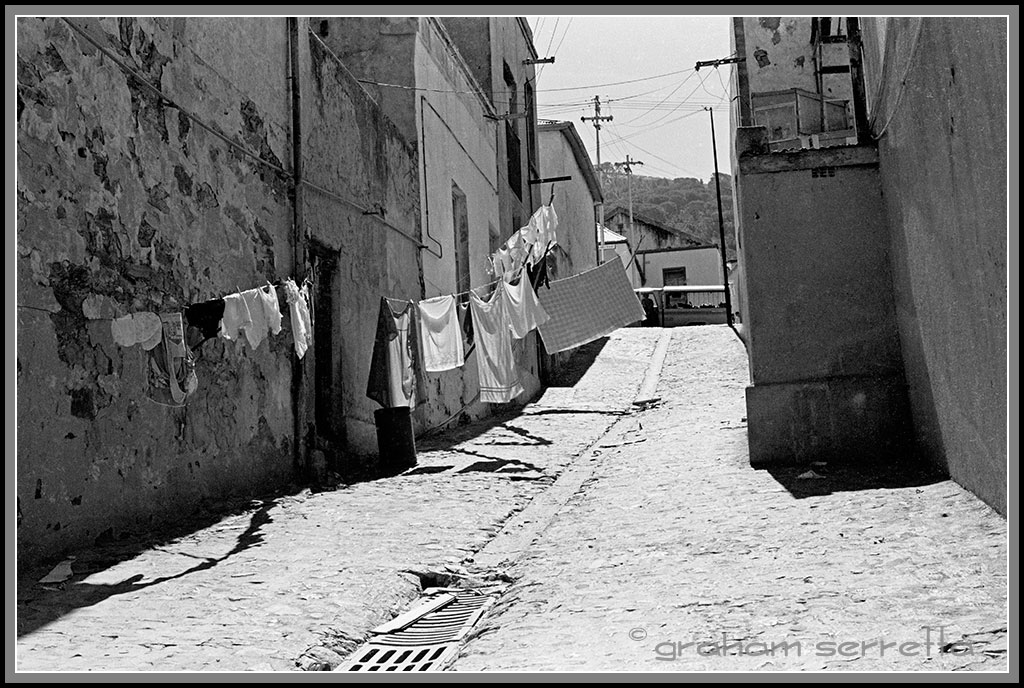
Washing hanging in the street was quite safe in District Six. Note the street sign in the middle background on the first telegraph pole on the left.
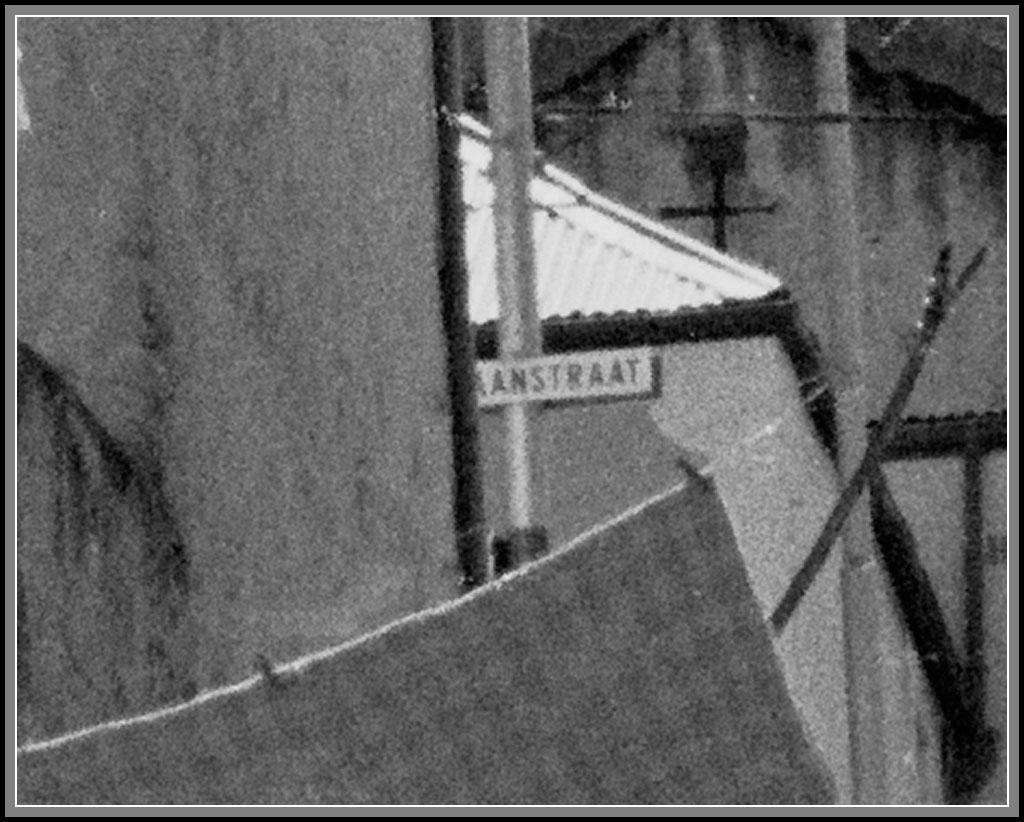
This is a crop of detail from image Dis6-0030. The resolution of the Nikkor-H 50mm f2.0 lens is demonstrated perfectly.

A washerwoman at the laundry station above District Six. Her name was Mrs Peterson. Generations of women worked there, doing washing and ironing for the bachelors of Cape Town.
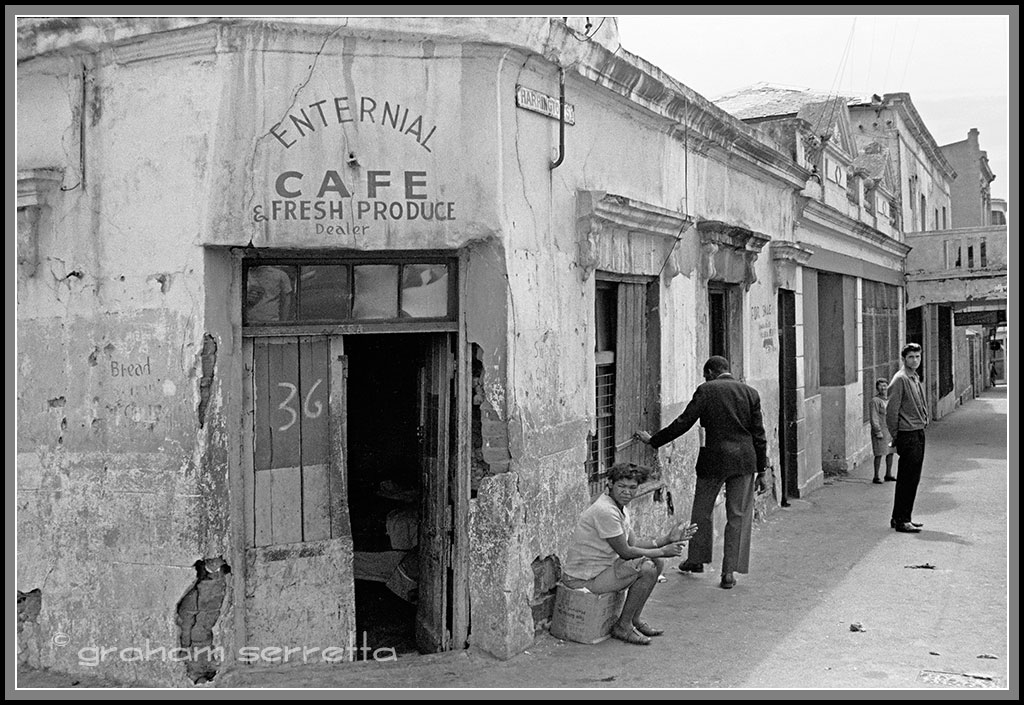
The "Eternial" (sic) Cafe' - A corner shop in upper Harrington Street, District Six. One could buy anything from fresh produce to hardware and clothing in such a shop.
REPLIES:
Michael Ivnitsky , nov 20, 2005; 04:39 p.m.
wow.a peace of history.
Michael Ging , nov 20, 2005; 05:15 p.m.
Graham, thank for sharing the photos and the information. The information on the camera and film is interesting as well.You have the Negs, do you still have the camera?
P C Headland , nov 20, 2005; 06:17 p.m.
Nice series Graham, with a nice historical comment.
Paul
Jim McBride , nov 20, 2005; 08:21 p.m.
Thank you for sharing information and pictures concerning a part of the world about which many of us know too little.
David Bedell , nov 20, 2005; 09:23 p.m.
Great stuff
wj gibson , nov 21, 2005; 05:01 a.m.
Great folder of photos, thanks for sharing.
Andrew Yue , nov 21, 2005; 07:14 a.m.
Old B&W negs live on to there story again, again.
Mark Wilson , nov 21, 2005; 08:42 a.m.
Graham, they are absolutely stunning. Sometimes I see the texture of "the mountain" as a backdrop. My wife was born in Tuine 3 years later, then attended the Zonnebloem campus of the Cape Technikon (I think that might be in a different area, but same mountain!)
The rendering of the concrete is superb. What a kick-in-the-stomach set of nostalgic photos. I am blown away.
Mark in Toronto
Graham Serretta , nov 21, 2005; 08:43 a.m.
Thank you all for the kind words - posting my work is all the more rewarding when the audience is so appreciative. Michael - No, I wish that I did still have the camera. Especially as it was one of the originals with the Nippon Kogaku logo serial No. 63XXXX. I foolishly allowed the lab where I worked to keep it on the neg copy stand in exchange for an FE2. Andrew - The fact that I still have the negs after nearly 40 years and can use them makes me very aprehensive about the longevity of the digital files that are filling more and more CD ROMs in my cupboard. Little bits and pieces of memory return the more I look at the shots. I used Acufine almost exclusively in those days. I also always used a Y2 filter, so the increase in film speed helped to compensate for the filter factor. Exposure was by incident reading now & then with a Norwood Director, adjusted according to my own judgement. The one shot through the church window shows the sign for a "Leer & Skoen Handelaar" which means "Leather & Shoe merchant". The friend that was with me when I shot these went to collect a pair of shoes there that he had had them custom make for him. They did wonderful work. The washer woman was one of many who worked in the wash-house. She did my friends weekly washing and ironing for 2/6 a basket. That's about ten pence in today's money. The wash house was a big roofed area with rows & rows of concrete wash troughs each with a cold water tap, provided and maintained by the city council (or municipality, as it was called). The washer-women did washing in these troughs for most of the batchelors and many of the guest houses in Cape Town, in cold water summer or winter, and hung it out to dry on long lines (visible in the background of the shot) and then ironed it on wooden tables using real cast-iron irons heated on a brazier. You never saw such white whites! Some of them worked there from the time that they were little girls, helping their mother, to old age. "Ownership" of a wash trough was passed down through the family from generation to generation.
csab' józsa , nov 21, 2005; 10:32 a.m.
Nice work, Graham. District 7 is my favourite of these. Reminds me a bit of my wanderings in the saxon region in transylvania where, although not strictly forced by anyone, lots of people abandoned their houses/villages and emigrated to germany. Twenty-something years are apparently enough for houses, churches, schools to start falling apart.
csab' józsa , nov 21, 2005; 10:33 a.m.
Sorry, i mean "District Six 7", above.
Andre Reinders , nov 21, 2005; 01:30 p.m.
Simply awesome photos and story... thank you for sharing.
Ron Bishop , nov 21, 2005; 10:29 p.m.
I think you brought the veiwers of this fine collection of photos to the realality of the time. If the oil drums, Studebakers and De Sotos hadn't been there they could be conveying a time long gone. At my age it's still today. Thanks
Graham Serretta , nov 22, 2005; 04:01 a.m.
Csab' - It's all the more tragic when the houses are allowed to fall down with the people still living in them, as was the case here.
Ron - At our age, we tend to look back through rose tinted lenses. In fact we tend not to remember the bad, except in people, where "the evil men do lives on, the good is oft' interred with the bones" holds true. Still, travelling back in time through our photographs can be most rewarding.
Graham Serretta , nov 22, 2005; 05:19 a.m.
Mark said "My wife was born in Tuine 3 years later, then attended the Zonnebloem campus of the Cape Technikon (I think that might be in a different area, but same mountain!)"
Same area, same mountain - The Cape Technikon is built on ground that was once part of District Six - the original plan was to build housing, but because it was zoned for whites only, no developer would answer any tender as the labour would have to be from the coloured workforce, whose homes had been taken from them and therefore would not work on any such development. Eventually the site was re-zoned for "civic use" and the Cape Technikon built as an educational facility, using African workers imported from the Transkei coast.
"Tuine" means "Gardens" and my eldest daughter was also born in the Gardens nursing home in 1969 - she and your wife are very special people!
Thanks for the comps - hope you are happy in your new home - lets see some pics.
Top of Form
Bottom of Form
Notify me of Responses


